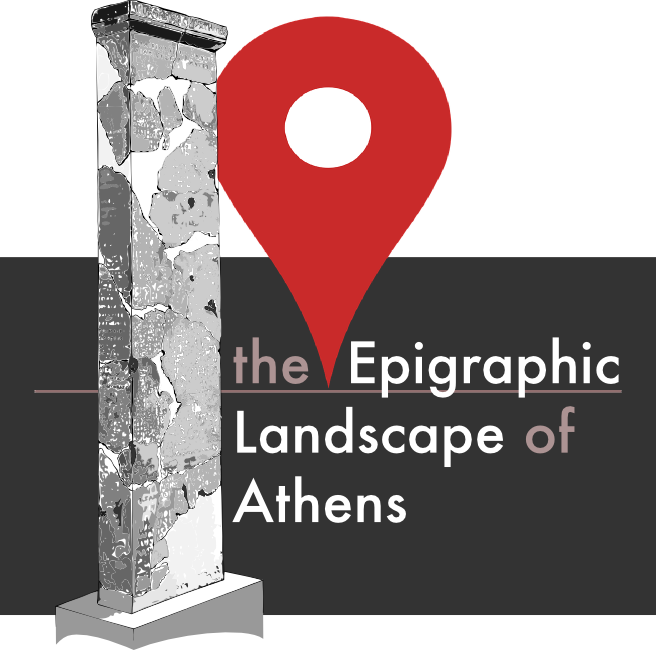The Epigraphic Landscape of Athens
Welcome to the Database of The Epigraphic Landscape of Athens, a project whose objective is to show the relationship between public inscriptions and urban space in ancient Athens [read more...] .
Every inscription, carved on stone and set up in the city space, can be also seen as a communication medium. Public documents (decrees, laws, treaties, accounts, lists, etc.) can be therefore considered as special objects, through which the 'voice' of the polis community is made tangible, becoming monument. In order to appreciate such an ancient communicative phenomenon in its entirety, it is important not to disjoint it from its physical presence and fruition in the polis-space, just as it is important not to ignore the double nature of the epigraphic documents as texts as well as monuments. In this regard, The Epigraphic Landscape of Athens is specially focused on the places of publication of the Athenian public inscriptions (i.e. documents issued from the late 6th century to Late Antiquity, and set up in the asty), grounding on the idea that urban spaces are able to complete, and even to enrich with further ideological or cultural overtones, the original message of the inscribed texts; and that these latter, with their very presence in the city, are able to produce a different sort of public space as 'written space'.
The Epigraphic Landscape of Athens project is funded by the Italian Ministry of Education and Research in the frame of the SIR Programme (Scientific Independence of young Researchers) 2014, and hosted by the Department of Historical Studies, University of Turin.
The ELA Database is an open-access online resource aimed at providing to scholars a new research tool for a topographical study of the Athenian public inscriptions as communication media in the frame of The Epigraphic Landscape of Athens project [read more...] .
For each document, the database records the place of original display, together with a series of other supplementary data. In addition to some basic information about the inscription (inventory number, main edition, chronology, text category, etc.), the database provides the findspot information (place, date and circumstances of discovery, etc.), a description of the epigraphic monument (shape, ornamentation, text layout, etc.), and a recording of the epigraphic formulae concerning the publication of the inscription. Through the Advanced Search the data recorded can be explored by selecting one filter at a time, or cross referenced by selecting multiple filters.
The ELA Database population is currently in progress. Please consult the News section of the website for information about the current coverage, and the groups of inscriptions that are being scheduled for publication in the database. Updates on publications, conference speeches, and other activities related to The Epigraphic Landscape of Athens project are also provided on this page.
You are anytime welcome to write to us at anytime for enquiries at chiara.lasagni@unito.it. Of course, relevant comments and suggestions, or new collaboration proposals are more than appreciated. A training demo of the database form is available in the Backend section of the website, through the login info “demo@epigraphiclandscape.unito.it” (user) - “demo” (password).
How to cite the ELA Database as a source of reference
The ELA Database records can be referred to in long or in abbreviated form. As for the latter, we recommend to use the abbreviation "ELA" followed by the ELA-id number. For citations in the long form, please consult the post note attached to each record: e.g.: ELA no. 144 = Lasagni, Chiara, Fragment of an honorific decree, 2017. DOI: 10.13135/ELA-141


